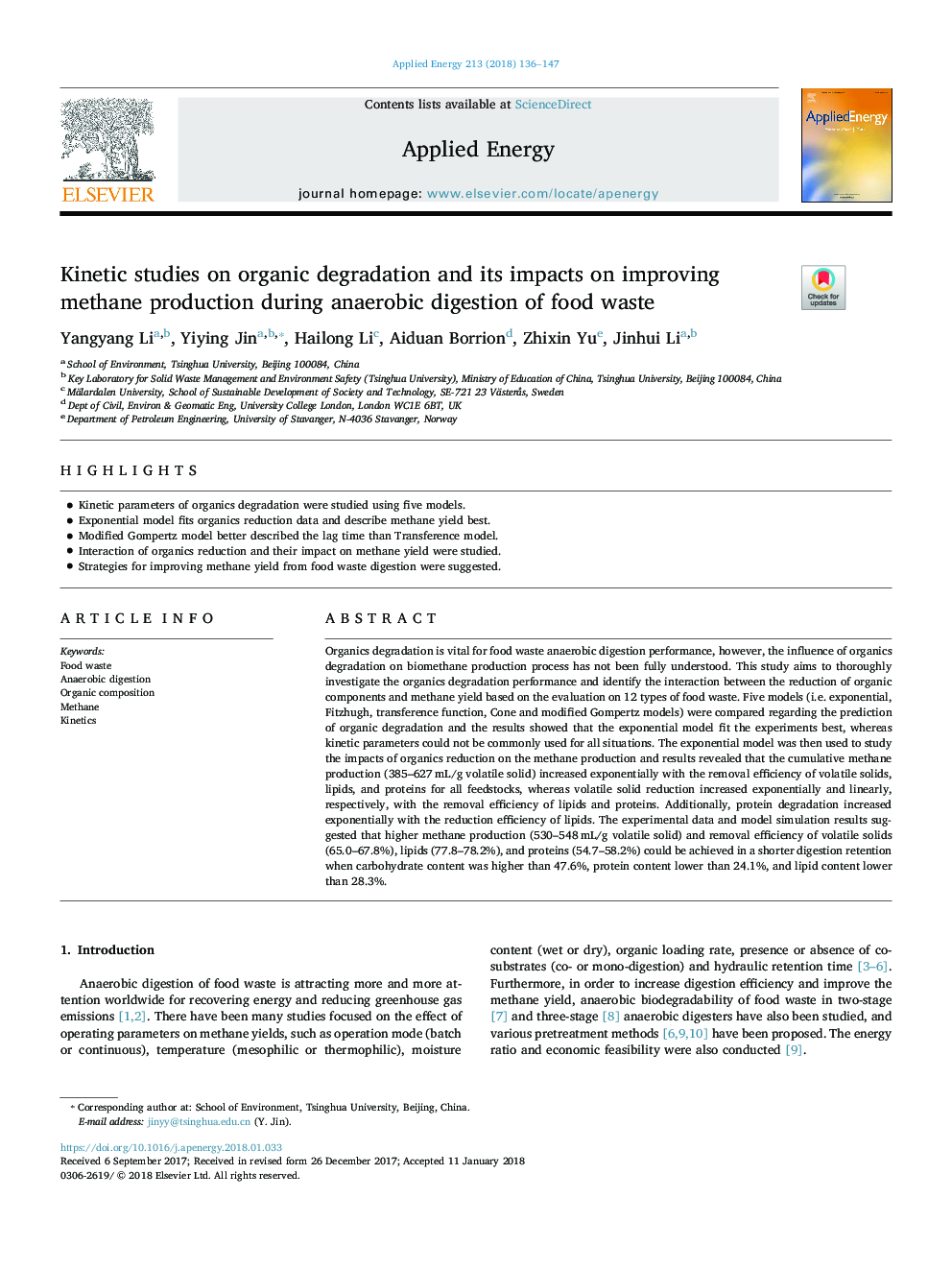| کد مقاله | کد نشریه | سال انتشار | مقاله انگلیسی | نسخه تمام متن |
|---|---|---|---|---|
| 6680763 | 1428077 | 2018 | 12 صفحه PDF | دانلود رایگان |
عنوان انگلیسی مقاله ISI
Kinetic studies on organic degradation and its impacts on improving methane production during anaerobic digestion of food waste
ترجمه فارسی عنوان
مطالعات جنبشی بر تخریب آلی و اثرات آن در بهبود تولید متان در طی هضم بی هوازی مواد غذایی
دانلود مقاله + سفارش ترجمه
دانلود مقاله ISI انگلیسی
رایگان برای ایرانیان
کلمات کلیدی
زباله های مواد غذایی، هضم بی هوازی ترکیب ارگانیک، متان، سینتیک،
موضوعات مرتبط
مهندسی و علوم پایه
مهندسی انرژی
مهندسی انرژی و فناوری های برق
چکیده انگلیسی
Organics degradation is vital for food waste anaerobic digestion performance, however, the influence of organics degradation on biomethane production process has not been fully understood. This study aims to thoroughly investigate the organics degradation performance and identify the interaction between the reduction of organic components and methane yield based on the evaluation on 12 types of food waste. Five models (i.e. exponential, Fitzhugh, transference function, Cone and modified Gompertz models) were compared regarding the prediction of organic degradation and the results showed that the exponential model fit the experiments best, whereas kinetic parameters could not be commonly used for all situations. The exponential model was then used to study the impacts of organics reduction on the methane production and results revealed that the cumulative methane production (385-627â¯mL/g volatile solid) increased exponentially with the removal efficiency of volatile solids, lipids, and proteins for all feedstocks, whereas volatile solid reduction increased exponentially and linearly, respectively, with the removal efficiency of lipids and proteins. Additionally, protein degradation increased exponentially with the reduction efficiency of lipids. The experimental data and model simulation results suggested that higher methane production (530-548â¯mL/g volatile solid) and removal efficiency of volatile solids (65.0-67.8%), lipids (77.8-78.2%), and proteins (54.7-58.2%) could be achieved in a shorter digestion retention when carbohydrate content was higher than 47.6%, protein content lower than 24.1%, and lipid content lower than 28.3%.
ناشر
Database: Elsevier - ScienceDirect (ساینس دایرکت)
Journal: Applied Energy - Volume 213, 1 March 2018, Pages 136-147
Journal: Applied Energy - Volume 213, 1 March 2018, Pages 136-147
نویسندگان
Yangyang Li, Yiying Jin, Hailong Li, Aiduan Borrion, Zhixin Yu, Jinhui Li,
